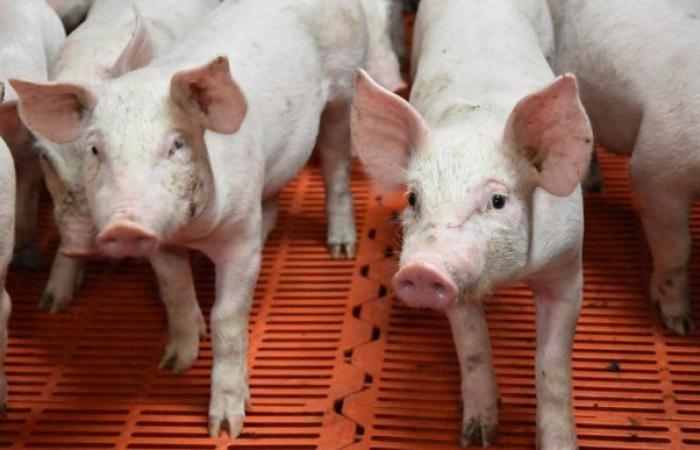Highly contagious viral respiratory diseases, swine influenza viruses are transmissible to humans. In 2021, a case of swine influenza was detected for the first time in a breeder in Brittany. Several cases of transmission of these viruses have also been recorded in several countries.
Faced with this significant risk for human and animal health, the national agency for food, environmental and occupational health safety (ANSES) was mandated to assess the risk of introduction and persistence of these viruses in pig farms as well as the risk of transmission between animals and humans.
A disease potentially transmissible to humans
Swine flu is frequently encountered on French farms. Pigs can be infected by porcine influenza viruses but also by human or avian influenza viruses. “This co-infection can facilitate the emergence of new so-called reassortant influenza viruses: by combining the genes of several influenza viruses of different origins, they could become more virulent or facilitate their transmission to other species,” explains ANSES in a report published in November 2024.
ANSES’s expertise highlights that live pigs, in particular young sows, represent the main source of introduction of these viruses into farming. In fact, the agency recommends screening new animals before moving them. She emphasizes that the movements of animals between farms, but also between regions and countries, contribute to the spread of these viruses and therefore to the appearance of reassortant viruses with “panzootic or pandemic” potential.
A persistent virus in breeding
The agency also recalls that compliance with biosecurity measures on farms is essential, especially when introducing animals, because swine influenza viruses are particularly persistent in the environment. According to ANSES, this persistence is strongly conditioned by the immunological status of the pigs, the so-called “band” breeding management and the structure of the buildings, in particular ventilation.
Humans are also a vector for the introduction of swine influenza viruses into livestock production. ANSES therefore recommends following the recommendations of the High Health Authority for vaccination against seasonal flu for people working on pig farms.
In addition, “people with flu symptoms should not enter farms and, during the period of circulation of seasonal flu, breeders and others in contact with pigs must wear personal protective equipment: masks, glasses /visors, gloves…”
Reinforced vigilance
Even if the risk of inter-human transmission of swine viruses is low with the viruses currently circulating, ANSES calls for strengthening surveillance of influenza viruses in pigs as in humans.
The Agency suggests in particular studying the possibility of extending the Saga (Active Surveillance of Avian Influenza) protocol to swine flu, which aims to early detect cases of transmission from animals to humans. The goal? Improve the responsiveness of professionals in the sector (veterinarians, doctors, breeders, etc.) to identify the appearance of new viral strains as early as possible.






